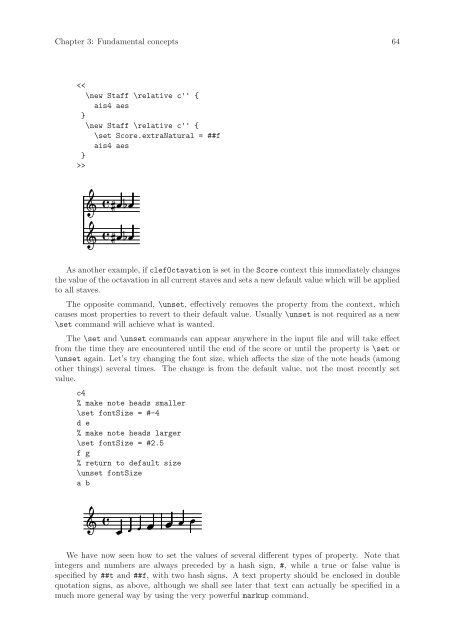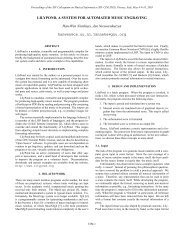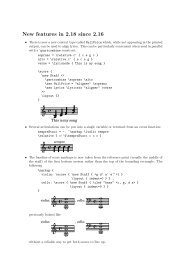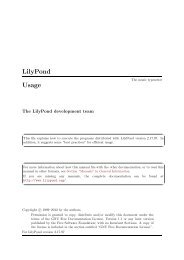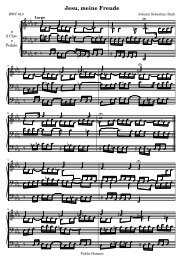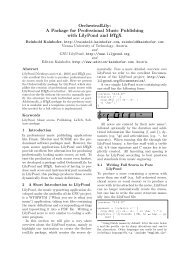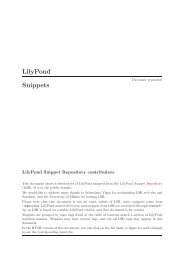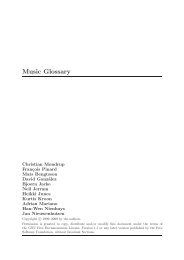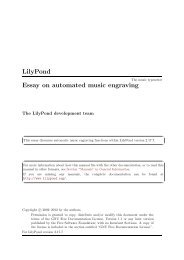Create successful ePaper yourself
Turn your PDF publications into a flip-book with our unique Google optimized e-Paper software.
Chapter 3: Fundamental concepts 64<br />
><br />
�<br />
�<br />
���� � ��� ��<br />
As another example, if clefOctavation is set in the Score context this immediately changes<br />
the value of the octavation in all current staves and sets a new default value which will be applied<br />
to all staves.<br />
The opposite command, \unset, effectively removes the property from the context, which<br />
causes most properties to revert to their default value. Usually \unset is not required as a new<br />
\set command will achieve what is wanted.<br />
The \set and \unset commands can appear anywhere in the input file and will take effect<br />
from the time they are encountered until the end of the score or until the property is \set or<br />
\unset again. Let’s try changing the font size, which affects the size of the note heads (among<br />
other things) several times. The change is from the default value, not the most recently set<br />
value.<br />
c4<br />
% make note heads smaller<br />
\set fontSize = #-4<br />
d e<br />
% make note heads larger<br />
\set fontSize = #2.5<br />
f g<br />
% return to default size<br />
\unset fontSize<br />
a b<br />
� � � �<br />
�<br />
� � �<br />
�<br />
We have now seen how to set the values of several different types of property. Note that<br />
integers and numbers are always preceded by a hash sign, #, while a true or false value is<br />
specified by ##t and ##f, with two hash signs. A text property should be enclosed in double<br />
quotation signs, as above, although we shall see later that text can actually be specified in a<br />
much more general way by using the very powerful markup command.


